Hagerman National Wildlife Refuge
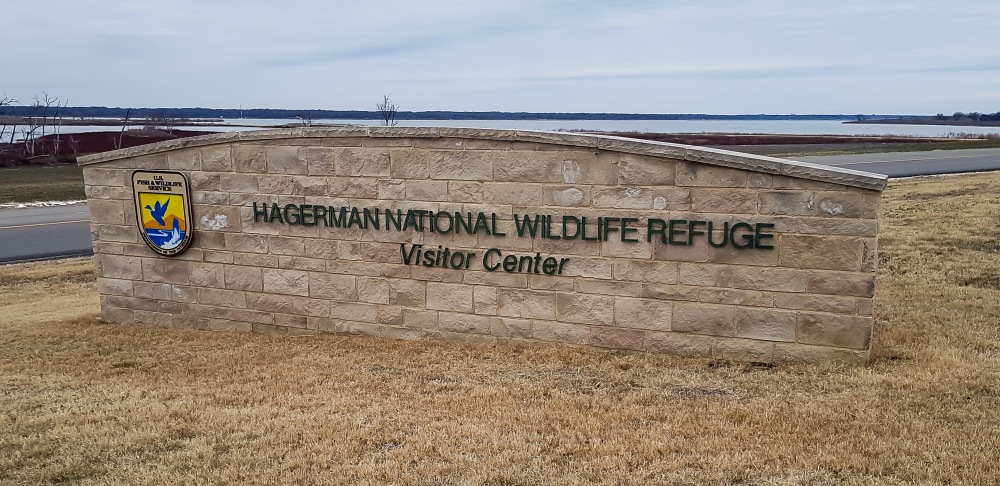
On a frozen January day, my partner and I decided to visit the Hagerman National Wildlife Refuge on the banks of Lake Texoma in the North of Texas. It was only a short 1.5 hour trip from our base in Fort Worth and apparently, this was the number one place in the region for wildlife. Coming from Australia, the day was filled with intrigue and optimism; intrigued by the chance to see wildlife I had never really seen before, and optimism by what was potentially on offer. The refuge itself was actually once the town of Hagerman. A school, about 250 residents and a railway once resided there. The damming of the Red River in 1943 spelled the end of the town itself, as it was inundated by the redirection of the flow, entombing the memories of Hagerman forever.

The refuge is smack bang in the centre of the Central Flyway, a bird migratory route that follows the Great Plains. It is made up of a variety of habitat types including woodlands, wetlands, grasslands and prairie. This assemblage of habitat types in such close proximity to one another, creates an exceptionally diverse home for an array of birdlife, mammals, reptiles and amphibians, wildflowers and fish. It also helps that approximately 700 acres are set aside each season for the planting of winter wheat, millet and corn, perfect forage for the migrating birds.

Up to 280 bird species call this place home. My visit coincided with one of the coldest days of the year. There was recent snow on the floor and the shorelines were completely iced over. Even the fallen timbers looked cold. The time of year and cold temperatures would limit the species I could potentially see and photograph. But it wouldn’t limit my enthusiasm. As much as a perfect Spring day full of fresh, morning warmth and gorgeous orange hues may have been a more ideal situation for a greater experience and amazing photographs, I just didn’t mind the muted, Winter vibes. The sky was white, my hands were frozen (less frozen thanks to a last-minute trip to Walmart on the way), it was quiet on the prairie. I had conceded on a bunch of species. But I was in a place I had never been before, in conditions I had rarely encountered.
But it was so damn cold.
My target species were the resident Bald Eagle, that has put this place on the map, a Northern Harrier (I am still unsure as to why, I think because the Spotted Harrier here in Australia is undoubtedly one of the most beautiful raptors we have, and being a harrier, the Northern Harrier might fit the same bill), Eastern Bluebird and the migrating Snow Geese.

We only had the day to visit, so we headed straight to the Visitor Centre to get some info. on areas to visit. The lady inside was lovely to say the least and gave us the goods. I was pumped. As is the case sometimes, we didn’t have to go far, literally back to our car to find the carpark littered with birdlife. Sparrows, both Harris’ and White-Crowned were seen fleeting through the artificial water feature, frozen by the unsympathetic cold. Northern Cardinals and Blue Jays were vocalising above. I could hear them saying “it’s cold!” My first glimpse of an Eastern Meadowlark (or Western, hard to tell the difference) left me content as I walked back to the car. I think I had walked 25 steps and technically hadn’t even entered the park yet.
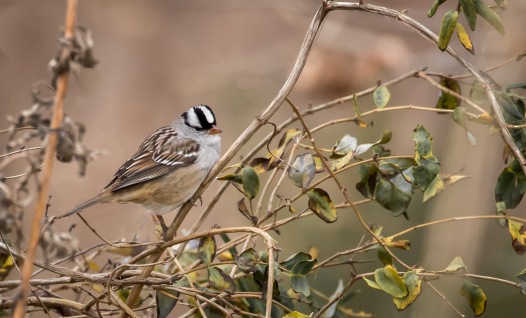
White-Crowned Sparrow

White-Crowned Sparrow
The park is set out like I have never really seen before. Wildlife Drive is the main thoroughfare taking you to any walk or picnic areas throughout the refuge. It kinda skirts the coastline. 3 main fingers jut out into the water, appropriately named Egret, Heron and Tern pads. These are all driver accessible and enables you to feel a part of the environment, taking you to the wildlife and providing ample habitat opportunities along the way. To me, it totally felt like I was in a wildlife park, a kind of safari type park where you could drive your car through the exhibits, driving with the wildlife in their natural habitat, except we were in their natural habitat and they weren’t cage in!

A checklist and bird count was regularly up-kept by some serious bird-dudes and this list could be found in the Visitor Centre. Upon closer scrutiny, I had found that there were a total of 3 Snow Geese and 5 Ross’ Geese seen the day prior. 8 geese!! We had missed the migration. We chatted to the lady and she had said she hadn’t seen them for some days. What a bummer! Missed them by a week. The Snow Goose has a very expansive range, wintering from Louisiana to Texas and heading north in the Summer. Their migration routes are very habitual, usually stopping at traditional stop over points along the way. Hagerman was one of these points, but unfortunately for us, we may be missin’ out on this iconic species.
To my astonishment, my first bird of prey spotted was a Northern Harrier! Awesome looking bird with its owl-like face. It was hunting in the fields, hovering stylishly from above. Just 5 minutes beyond this first encounter was my 2nd raptor species, a juvenile Cooper’s Hawk, just chilling low in the trees.

Northern Harrier

Northern Harrier

Juvenile Cooper’s Hawk
A short drive around the corner and a look afar, out at the field caught our eye. What was all that whiteness on the lush, green meadow??….. the Snow Geese! We hustled on over and couldn’t believe our eyes. The sheer numbers were unbelievable! We wandered into the field to get a closer look when suddenly, like a rogue wave crashing into the rocks, an even bigger flock of snow geese appeared and began to fly directly over us, vociferously calling overhead. Its weird to say but I felt a wave come over me as they approached, as though the wingbeats were creating movement. They were coming and they were hasty. A wildlife experience to treasure!

Snow Geese
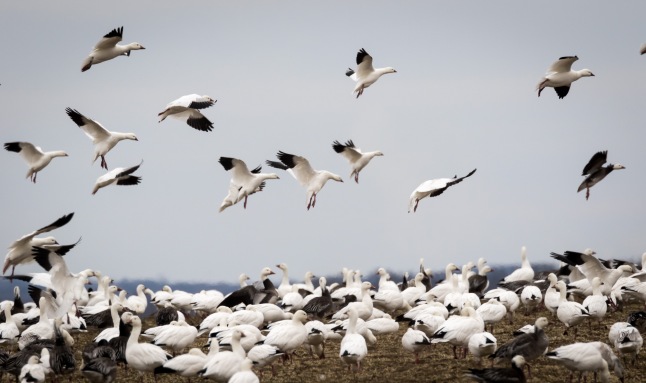
Snow Geese

Snow Geese Overhead
A couple hours searching for the Bald Eagle left us ready to finally leave our vehicle for the first time. We chose to walk down the Meadow Pond Trail to check out Dever Pond. Our eagle friend had been sighted by this pond a little over a week before. It was an easy walk down to the pond which netted us plenty of species. The cold weather meant there were no chance of seeing Scissor-Tailed Flycatcher, Painted Bunting, Tanagers or the like, they are smart and migrate away for the Winter. But, there were a were still plenty of species left for us to see. The walk netted us more Northern Cardinal, Harris’ Sparrow, Downy Woodpecker, a provocative Hermit Thrush, a Spotted Towhee, an Eastern Phoebe, even a Common Snipe paid a visit, albeit brief and turbulent. But no Bald Eagle. Onward.

Spotted Towhee

Northern Cardinal

Harris’ Sparrow

Downy Woodpecker
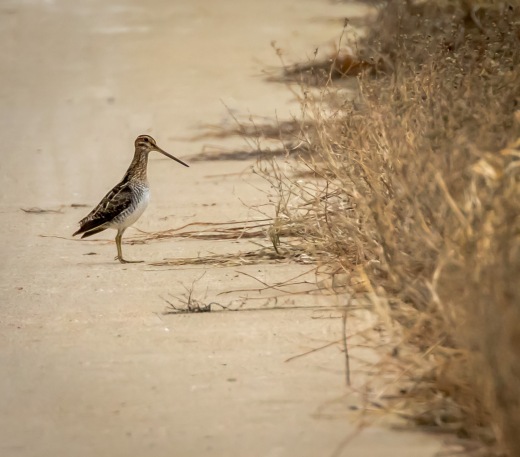
Wilson’s Snipe

White-Crowned Sparrow
The day picnic area proved to be dunny stop #1 and a walk down to the small stream got me a Kildeer and the best picture of a Great Blue Heron of the entire trip! A common but gorgeous bird, its size and colour delivers an elegance unmatched.

Kildeer
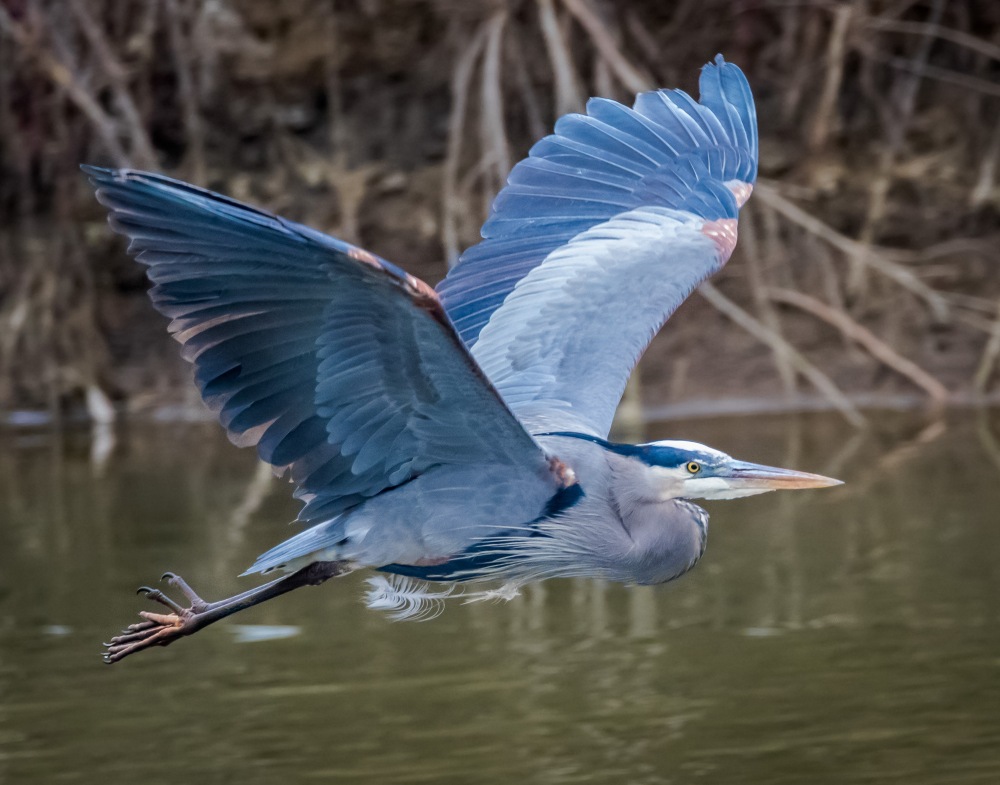
Great Blue Heron

Great Blue Heron
We were hungry and were in the beginnings of hanger (hungry/anger). We were on the lookout for a lunch spot. A look out to our left caught our attention. No not a lunch spot, but what we thought, was a huge looking bird. Large, burly legs. Great sharp talons. Stoic stare. But its all brown. What bird was this? It was the Bald Eagle! Not your unmistakable looking adult, bald white head and tail, but a ruffled brown bird. A juvenile. But the size! It was huge! It allowed me to get within 20 metres, but it was well aware of me. It flew to a farther branch and I stood back and watched. I didn’t want to disturb it anymore. What a bird! My goal. The patriotic symbol of America. Its not the typical Bald Eagle shot, but possibly one of my favourites ever! Big tick
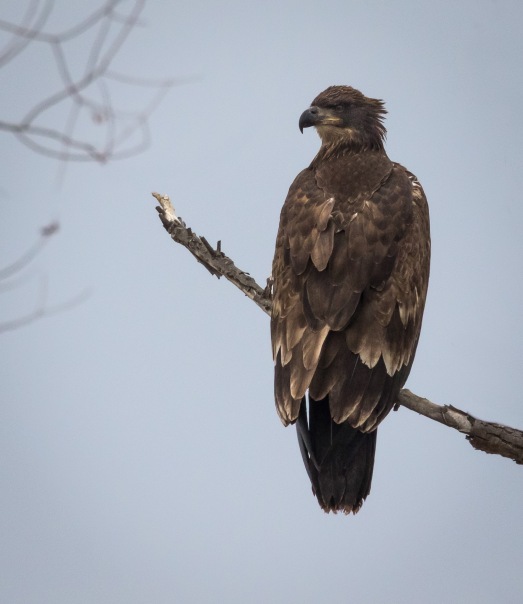
Juvenile Bald Eagle
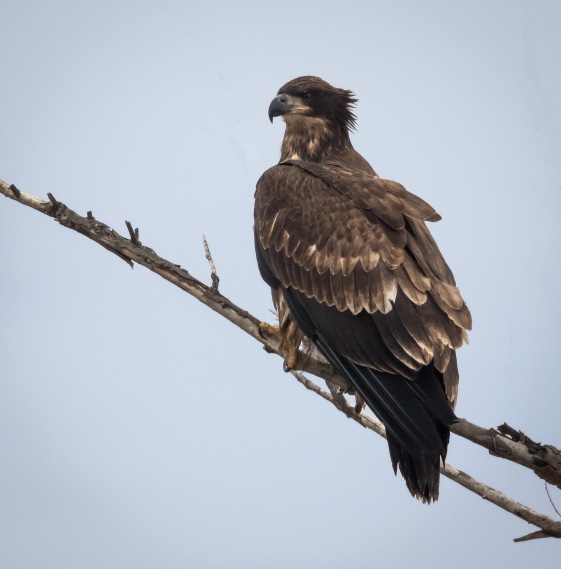
Juvenile Bald Eagle
As the afternoon wound down, the cold reared its head once more and things were quiet. Daylight was fading fast and there was only room for one last drive down Wildlife Drive. My favourite looking American bird, the American Kestrel, was already ticked on my list. The American Kestrel is a beautiful bird, small for a raptor, but much more colourful, with shades of red and blue evident. I could see one in the distance, and upon closer inspection, it was eating a mouse! Roadside! We drove up closer and unfortunately, when we had not seen anyone for hours, a car drove past and it flew away. We left, checked out more park, went for a little walk and about 20 minutes later drove past the Kestrel spot. Lucky for us, the bird had returned, back to the same perch! Is this strange behaviour? I’m not sure but no cars were scaring this bird away this time!
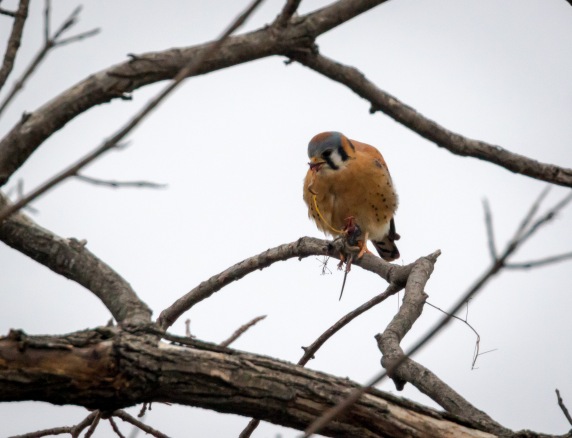

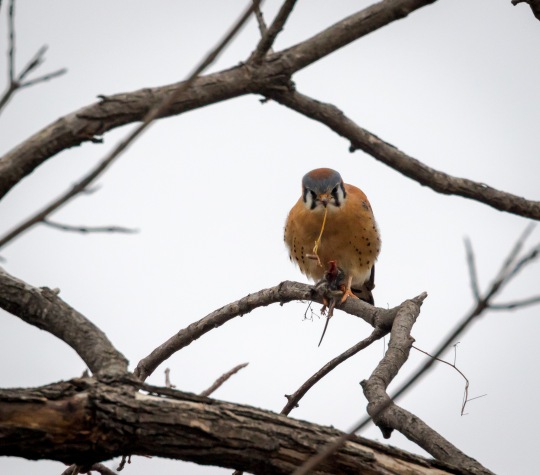


I got my shots and the deer had emerged from the dense undergrowth to feed on what little was left of the lush, green grass. My first US wildlife adventure was over. I had ticked of around 30 species, had a wow of a time and will return to this place on my next visit to Texas. Hagerman Wildlife Refuge is an awesome place and if in the area, I highly recommend a visit, even if you aren’t into the birds or wildlife, it is a gorgeous, calm and peaceful place; a home, a refuge for our furry and feathery friends.
